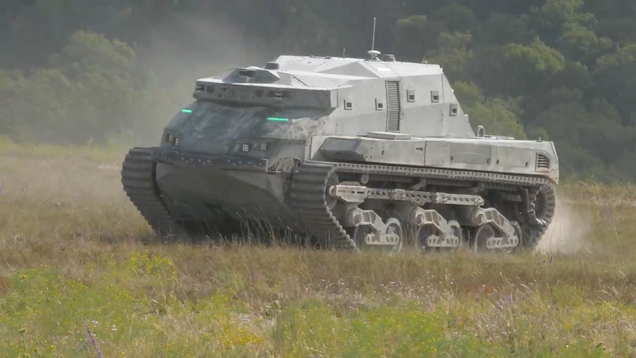
An experiment done aboard the International Space Station demonstrates the potential for a hardy fungus to shield astronauts from cosmic radiation. This fungus has already proved its mettle inside one of the most hostile places on Earth: the ruined Chernobyl Nuclear Power Plant.
Galactic cosmic radiation remains a troubling impediment to a sustained human presence in space.
This unresolved problem is starting to get a bit urgent, with NASA’s Artemis Moon landing scheduled for 2024, along with promises of crewed missions to Mars and the establishment of Martian colonies. A 360-day round trip to the Red Planet, for example, would expose unprotected astronauts to two-thirds of their allowable lifetime exposure, or 662 mSv, making them vulnerable to numerous health risks, including fatal cancers.
Scientists and engineers have proposed various solutions to address the problem, including a Star Trek-like deflector shield and a proposal to manufacture radiation-shielding bricks from the dusty Martian regolith.
But as new research uploaded to the preprint bioRxiv points out, a ready-made solution may already exist in the form of an extremophile fungus known as Cladosporium sphaerospermum.
G/O Media may get a commission
Scientists first discovered this organism back in 1886, and it has been found growing in radioactive environments, including the cooling pools of the damaged Chernobyl nuclear plant, where radiation levels are three to five orders of magnitude higher than normal background levels. C. sphaerospermum is a melanized, radiotrophic fungus—an organism capable of converting radioactive energy into chemical energy, which it does using melanin pigments inside its cell walls. Sounds weird, but it’s analogous to photosynthesis, in which plants convert energy from visible light to useful energy.
“Melanin may be also how the fungus protects itself from the harmful effects of radiation, with the ‘side-effect’ of an energy plus, which has probably lead to the fungus finding ideal habitats in radioactive environments,” Nils Averesch, a co-author of the study and a scientist at NASA Ames Research Center, explained in an email.
Given this fungi’s unusual appetite for radiation, Averesch’s co-authors, Graham Shunk and Xavier Gomez, former high school students with the Higher Orbits “Go for Launch!” Program (a non-profit promoting STEM fields), and others, conceived of an experiment to determine how much radiation this organism might absorb while in space. They also sought to evaluate its suitability as a medium for a radiation shield.
“They postulated that if an organism utilizes radiation, it should also be resistant to it and able to reduce it, also in space,” said Averesch. “They developed a concept for an experiment that would test this with radiation in space (since space radiation is quite different from radioactive environments on Earth) and were awarded through the Higher Orbits foundation.”
The chosen venue for this experiment was the International Space Station, which features a unique radiation environment not unlike the surface of Mars.
To run the test, a petri dish was divided in half, with one side featuring C. sphaerospermum and an empty side serving as the negative control. The fungi were allowed to grow for 30 days, while radiation levels were monitored every 110 seconds with a Geiger counter. Results showed that the fungi were capable of adapting to the microgravity environment of low Earth orbit and live off the incoming radiation. What’s more, the experiment showed that a 1.7-millimeter-thick layer of growth, or a “fungal lawn” as the researchers described it, blocked incoming radiation somewhere between 1.82% to 5.04% compared to the negative control.
“The error [range] is due to uncertainty in mathematical determination of this value,” said Averesch. “While this is not enough to sufficiently protect astronauts, it is a starting point for the further development of a live radiation shield.”
“In the experiment, we were able to prove that the fungus does not only thrive on ionizing radiation on Earth but also in space,” said Averesch. “In addition to not being destroyed by the radiation… the fungus does, in fact, reduce radiation of the measured spectrum.”
The researchers hypothesize that a fungal lawn measuring 8.2 inches (21 centimeters) thick could “could largely negate the annual dose-equivalent of the radiation environment on the surface of Mars,” as they wrote in the study. C. sphaerospermum is thus ranked as “among the most effective radiation attenuators,” making it a promising candidate for protecting astronauts against galactic cosmic radiation, they write.
As an added benefit, the fungus is a self-sustaining, self-replicative substrate capable of living off even the smallest doses of radiation and biomass. It can also be grown on many different carbon sources, such as organic waste.
“This significantly reduces the amount of shielding material that one would have to bring to Mars, which is maybe what makes it most exciting, as the up-mass is very restrictive in any Mars-mission scenario,” explained Averesch.
Averesch said no single solution will likely solve the problem that is space radiation, but the fungus could conceivably be used as part of a multi-component system. The fungus is not harmful to humans, he said, but exposure would likely be minimal, at any rate, because the microorganism could be grown within a double wall.
So, a promising start to this potential solution, but more experiments and data are needed. Looking ahead, Averesch would like to perform more tests with fungal growths “to strengthen the data and findings of the study” in preparation for submitting the paper to a peer-reviewed science journal.
Should this solution actually work, future space explorers would be wise to acknowledge their fungal companions—creatures capable of withstanding the intense radiation found within the Chernobyl nuclear plant. There’s something oddly reassuring about that.
Source: gizmodo.com








